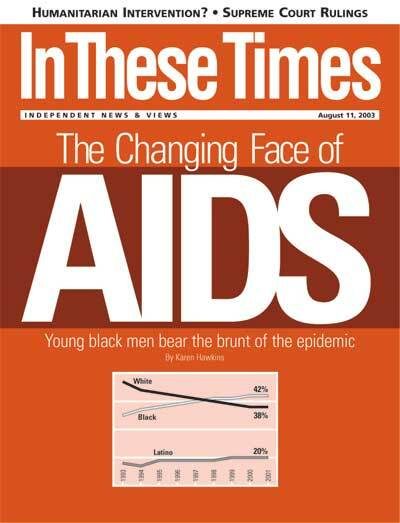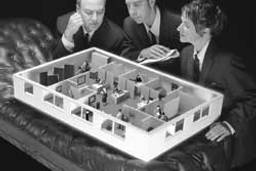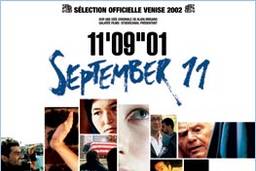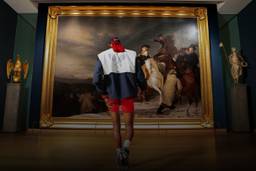Ang Lee’s The Hulk is the kind of rambling, overstuffed psychodrama that only a true artist could create. Reportedly, the picture wasn’t test-screened, a mark of Lee’s power after Crouching Tiger, Hidden Dragon, a power he richly deserved. The Hulk has passages of gorgeous abstraction—montages of deep purple jellyfish, spiky lichens, and green, cellular goings-on—as well as an abundance of deadening oratory. Even the title seems to have caused some consternation: Is it The Hulk, as so many of us have come to know the big fella, or just Hulk (as the prints say, but not Lee or his longtime producer and writer, James Schamus), thus signifying mass, transformation, maybe even a direct order?
Hard to say. But I ask you: Is this not the correct way, the honorable way, for a studio to spend $150 million of its summer capital? Universal said The Hulk, and Lee heard something else, perhaps a story of dysfunctional families torn apart by ambition. Part of me wants something cleaner and poppier, like Sam Raimi’s bland Spider-Man, or maybe the luridness that a director like Paul Verhoeven would have injected. These are perfectly understandable yearnings in the context of big dumb fun. Instead, we get art chafing with artifice, breakdowns alternating uneasily with smackdowns. It’s probably the most courageously confused movie of the year.
————–
All of Ang Lee’s films, even as they’ve ramped off into genre and the fantastic, operate on a personal schism that never gets resolved; so often they feel like tragedies. The foreigner and the homeland, the cushioned noose of marriage, the sword-bearing warrior with a lonely heart. The Ice Storm remains his truest work (and a bona fide masterpiece) for the simple fact of its elegant compression: one weekend in chilly, disconnected ’70s suburbia, the parents playing morosely with swapped spouses at “key parties,” the kids with their drugs and firecrackers, giggling under a rubber Nixon mask. Can it be that the Hulk concept is a little too spare for Lee’s attentions? Yes, there’s a division there, but never at once—never in the same moment or mind.
Thus, a kind of pained compensation happens in the first 45 minutes, almost a whole hour of Hulkless handwringing that introduces two absent fathers—disgraced geneticist David Banner (Nick Nolte) and Gen. “Thunderbolt” Ross (Sam Elliott)—and two abandoned children, the driven but aloof Bruce (an oddly inert Eric Bana) and his bombshell ex-girlfriend, Betty Ross (Jennifer Connelly), also a scientist. The kids have flashbacks of the “I dropped my ice cream cone” variety, plenty of tense arguments, and uncomfortable lunch dates with Dad. If it weren’t for the splendid efforts of editor Tim Squyres, combining shots with all manner of split-screen dissolves, bursting wipes, and overlapping panels, you might forget this was a comic book. Unfortunately, you never do.
What’s wrong with this picture? These are fine actors (with Connelly registering especially well in her confused tenderness), a director who knows how to use them, and technical craft to spare. It must be the premise: All of this for a gamma accident resulting in huge pecs? Doesn’t seem that bad. The tragic dimension is never convincing, and Lee now finds himself in a bind to justify a small fortune in therapy sessions. When Hulk happens, it comes as a relief, but a crude one—great pains have gone into making him realistic, but how sensible is that when you’re talking about a 15-foot green giant with purple trunks? On a dime, the psychology shifts from adult to adolescent, and it hurts.
But then something magical happens in the homestretch, when the captured Bruce is, er, “made angry” and bursts out of an underground lab to rampage his way back to Betty. Surprisingly, the whole thing works better as King Kong than as Dr. Jekyll. All of it was for love, you finally realize (belatedly, but better than never), and everything clicks; the disapproving dad hovers impotently in his rocket-launching helicopter as the ex-boyfriend who never got over it tears apart tanks and spits warheads in his face. These desert battles have a terrific impact (one priceless insert has a fly-fishing President blithely authorizing the go-ahead), and the overall insinuation of an unchecked rage quelled only by a sympathetic heart carries more meaning than could ever have been intended.
————–
Twenty-eight Days Later is a zombie flick, which makes it my kind of movie—dare I say, our kind of movie. No cinema zombie ever shambles into view without its agenda. Really, who are these lurching sadsacks if not the enemies of racial integration (Night of the Living Dead, with its cool-headed black hero), proponents of mindless consumerism (Dawn of the Dead, set in a Muzak-laden shopping mall), or simply the victims of corporate greed (Resident Evil, where the undead do double duty as prudish threats to a long-legged model in a slit skirt)?
Watching 28 Days Later, it’s tempting to reach for metaphors about SARS or monkeypox. The virus that decimates London in the film’s disturbing first act is triggered by—brace yourselves—overly zealous activists liberating experimental monkeys infected with “rage.” Good intentions notwithstanding, I don’t think these goofballs are the real culprits, nor any kind of epidemic du jour. As images of empty freeways gather in potency, and souvenir trinkets of Big Ben are crushed underfoot, a sense of British isolationism begins to take root: “What would you do with a diseased little island?” spits one forlorn military holdout, and Tony Blair should take note. Here are the apocalyptic anxieties of going it alone.
Director Danny Boyle has no love for empire; he arrived on the scene in a big way with his second feature, Trainspotting, which made ironic hash of hopped-up youth disenchantment (“Choose life”) and Scottish alienation alike. Much of that should be credited to Irvine Welsh’s cult novel. But it was Boyle who thought to chase them down the street to Iggy Pop’s “Lust for Life,” a perfect expression of fuck-everything exhilaration that finds its wry revision here: Boyle’s zombies run fast. It’s a trade-off; there’s something conceptually lost without the creeping progress of inevitable doom. But then again, some of these edits may have you jumping out of your seat. Hell, yeah, I’ll choose life—you wanna bet? Now run.
Hard to say. But I ask you: Is this not the correct way, the honorable way, for a studio to spend $150 million of its summer capital? Universal said The Hulk, and Lee heard something else, perhaps a story of dysfunctional families torn apart by ambition. Part of me wants something cleaner and poppier, like Sam Raimi’s bland Spider-Man, or maybe the luridness that a director like Paul Verhoeven would have injected. These are perfectly understandable yearnings in the context of big dumb fun. Instead, we get art chafing with artifice, breakdowns alternating uneasily with smackdowns. It’s probably the most courageously confused movie of the year.
————–
All of Ang Lee’s films, even as they’ve ramped off into genre and the fantastic, operate on a personal schism that never gets resolved; so often they feel like tragedies. The foreigner and the homeland, the cushioned noose of marriage, the sword-bearing warrior with a lonely heart. The Ice Storm remains his truest work (and a bona fide masterpiece) for the simple fact of its elegant compression: one weekend in chilly, disconnected ’70s suburbia, the parents playing morosely with swapped spouses at “key parties,” the kids with their drugs and firecrackers, giggling under a rubber Nixon mask. Can it be that the Hulk concept is a little too spare for Lee’s attentions? Yes, there’s a division there, but never at once—never in the same moment or mind.
Thus, a kind of pained compensation happens in the first 45 minutes, almost a whole hour of Hulkless handwringing that introduces two absent fathers—disgraced geneticist David Banner (Nick Nolte) and Gen. “Thunderbolt” Ross (Sam Elliott)—and two abandoned children, the driven but aloof Bruce (an oddly inert Eric Bana) and his bombshell ex-girlfriend, Betty Ross (Jennifer Connelly), also a scientist. The kids have flashbacks of the “I dropped my ice cream cone” variety, plenty of tense arguments, and uncomfortable lunch dates with Dad. If it weren’t for the splendid efforts of editor Tim Squyres, combining shots with all manner of split-screen dissolves, bursting wipes, and overlapping panels, you might forget this was a comic book. Unfortunately, you never do.
What’s wrong with this picture? These are fine actors (with Connelly registering especially well in her confused tenderness), a director who knows how to use them, and technical craft to spare. It must be the premise: All of this for a gamma accident resulting in huge pecs? Doesn’t seem that bad. The tragic dimension is never convincing, and Lee now finds himself in a bind to justify a small fortune in therapy sessions. When Hulk happens, it comes as a relief, but a crude one—great pains have gone into making him realistic, but how sensible is that when you’re talking about a 15-foot green giant with purple trunks? On a dime, the psychology shifts from adult to adolescent, and it hurts.
But then something magical happens in the homestretch, when the captured Bruce is, er, “made angry” and bursts out of an underground lab to rampage his way back to Betty. Surprisingly, the whole thing works better as King Kong than as Dr. Jekyll. All of it was for love, you finally realize (belatedly, but better than never), and everything clicks; the disapproving dad hovers impotently in his rocket-launching helicopter as the ex-boyfriend who never got over it tears apart tanks and spits warheads in his face. These desert battles have a terrific impact (one priceless insert has a fly-fishing President blithely authorizing the go-ahead), and the overall insinuation of an unchecked rage quelled only by a sympathetic heart carries more meaning than could ever have been intended.
————–
Twenty-eight Days Later is a zombie flick, which makes it my kind of movie—dare I say, our kind of movie. No cinema zombie ever shambles into view without its agenda. Really, who are these lurching sadsacks if not the enemies of racial integration (Night of the Living Dead, with its cool-headed black hero), proponents of mindless consumerism (Dawn of the Dead, set in a Muzak-laden shopping mall), or simply the victims of corporate greed (Resident Evil, where the undead do double duty as prudish threats to a long-legged model in a slit skirt)?
Watching 28 Days Later, it’s tempting to reach for metaphors about SARS or monkeypox. The virus that decimates London in the film’s disturbing first act is triggered by—brace yourselves—overly zealous activists liberating experimental monkeys infected with “rage.” Good intentions notwithstanding, I don’t think these goofballs are the real culprits, nor any kind of epidemic du jour. As images of empty freeways gather in potency, and souvenir trinkets of Big Ben are crushed underfoot, a sense of British isolationism begins to take root: “What would you do with a diseased little island?” spits one forlorn military holdout, and Tony Blair should take note. Here are the apocalyptic anxieties of going it alone.
Director Danny Boyle has no love for empire; he arrived on the scene in a big way with his second feature, Trainspotting, which made ironic hash of hopped-up youth disenchantment (“Choose life”) and Scottish alienation alike. Much of that should be credited to Irvine Welsh’s cult novel. But it was Boyle who thought to chase them down the street to Iggy Pop’s “Lust for Life,” a perfect expression of fuck-everything exhilaration that finds its wry revision here: Boyle’s zombies run fast. It’s a trade-off; there’s something conceptually lost without the creeping progress of inevitable doom. But then again, some of these edits may have you jumping out of your seat. Hell, yeah, I’ll choose life—you wanna bet? Now run.
Joshua Rothkopf has been covering cinema for In These Times since 1999. His work has appeared in The Village Voice, The Chicago Reader, Isthmus and City Pages, among other publications.








